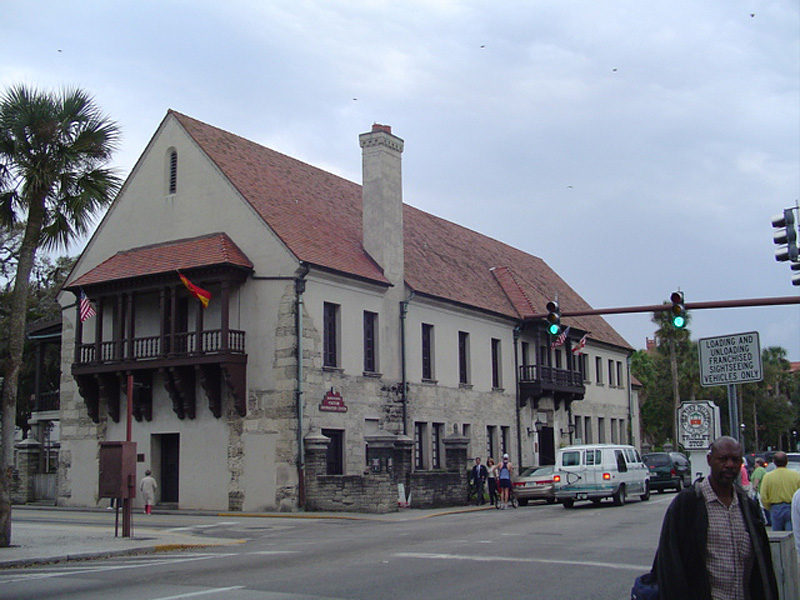Source: WTL photograph© (2007) on site in St. Augustine.
Image: Governor's House on the corner of St. George Street and Cathedral Place (green light direction).
Comment: Currently there is a visitors information center and a museum in this building: Timucuan culture, Seminole Wars, the Flagler era. Two flags fly over this building's balcony. Why two? Which countries do they symbolize? The first building on this site belonged to Governor Gonzalo Méndez de Canzo about 1598. This building was replaced by a two-story masonry building, which was burned down by the British in 1702, rebuilt by the Spaniards in 1706, and renovated in 1759. The last Spanish governor to live here was Don Enrique White, who died in 1811 in the Second Spanish Period. Thereafter, at the very end of the Second Spanish Period, the building was used for apartments and offices. When the United States took over Florida in 1821 (the American Period), the building was used as a courtroom, legislative council meeting room, and Florida's first Capitol. Later, it became a courthouse again, an office building, and a post office. It now houses the Government House Museum and offices of the Historic St. Augustine Preservation Board. In short, it is a building with a lot of history. When I have visited it, it gives me a very Spanish sense of place, style, and ethos. Note also, that king Felipe VI of Spain addressed a crowd in the Plaza de la Constitución (off left) from the center of the balcony you see on the east end of the building. See: => 450th Celebration. Note, also, that it was this king's royal namesake, Felipe II (1557–1598) who authorized Menéndez de Avilés to establish a permanent colony at St. Augustine.
Latin American humanities: Spanish colonial architecture; syncretism.


